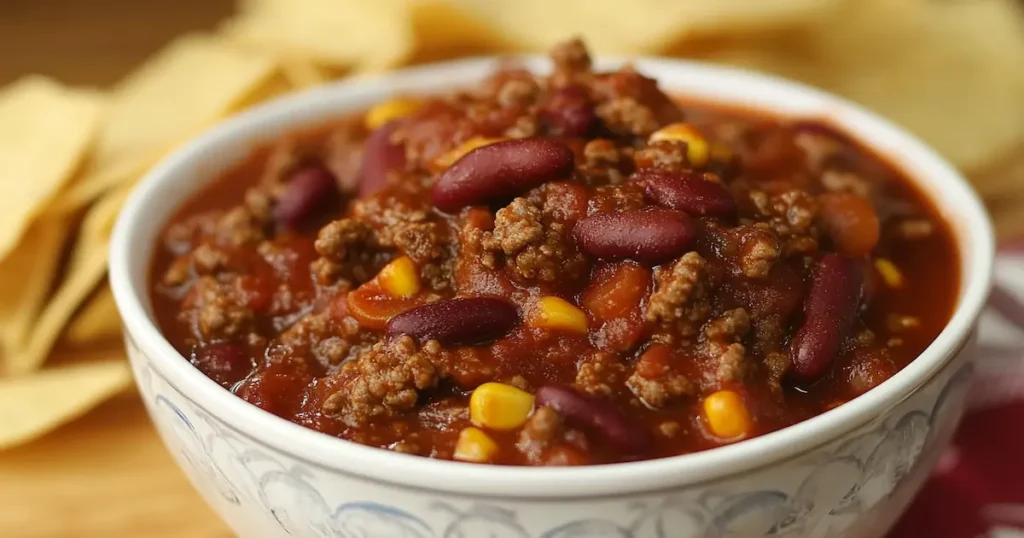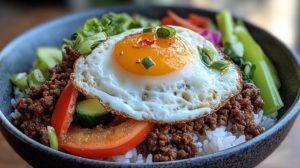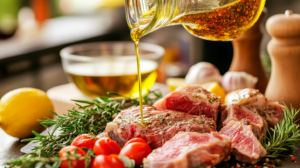Chili is one of those dishes that bring comfort, warmth, and a little spice into every bowl. But what exactly is the secret to really good chili? There’s more to it than simply throwing ingredients into a pot. To make chili truly remarkable, you need to balance flavors, textures, and the right combination of spices. Whether you prefer it mild, spicy, or with a touch of sweetness, really good chili has a few secrets that every cook should know. In this guide, we’ll share those secrets, tips, and techniques to help you make the best chili you’ve ever tasted.
Why Does Chili Matter So Much?
Chili is not just a meal; it’s an experience. From its rich, savory flavors to the spicy kick it delivers, really good chili is comforting and satisfying. It’s a dish that can be customized in countless ways, making it perfect for any occasion. Whether it’s a chilly evening, a family gathering, or a tailgate party, chili always hits the spot.

The Key Ingredients to Really Good Chili
The foundation of really good chili starts with high-quality ingredients. Here are the essential components you’ll need:
1. Beans (or Not!)
Some chili recipes include beans, while others do not. Traditional chili con carne typically leaves out beans, but for many home cooks, beans are a must for texture and flavor. Choose kidney beans, black beans, or pinto beans based on your personal preference.
Tip: If you want a more authentic flavor, go bean-free, but if you love the extra heartiness, include them!
2. Meat Choice
The choice of meat plays a crucial role in really good chili. Ground beef is the classic option, but ground turkey, chicken, or even plant-based meat alternatives can work. If you want a richer flavor, try using a mix of meats, such as ground beef combined with beef chuck for added depth.
Tip: Brown your meat thoroughly for a deeper flavor before adding other ingredients.
3. Tomatoes and Broth
Tomatoes are a staple in really good chili. Use a combination of diced tomatoes and tomato paste for a rich, thick base. Add a good-quality broth—chicken, beef, or vegetable—for a smooth, flavorful consistency.
Tip: For extra richness, consider adding a bit of tomato sauce or a splash of tomato juice.
4. Onions and Garlic
Onions and garlic are the aromatics that build flavor right from the start. Sauté these ingredients in a little oil to unlock their full potential. They create the perfect base for your chili’s flavor profile.
Tip: Use yellow or white onions for sweetness and depth.
5. Spices and Seasoning
The spice mix is what separates really good chili from just okay chili. Chili powder, cumin, paprika, and a touch of cayenne pepper give your chili that signature warmth and spice. Fresh herbs like cilantro can add brightness, while a dash of brown sugar can balance out the acidity from the tomatoes.
Tip: Don’t be afraid to adjust the spice levels to match your taste. Add more chili powder for heat or a pinch of cinnamon for warmth.

The Secret to Developing Rich Flavor
Great chili doesn’t happen instantly—it takes time to develop those deep, rich flavors. Here’s how you can make sure your chili is as flavorful as possible:
1. Sear Your Meat Properly
Searing your meat before adding any liquids is essential for building depth of flavor. When meat browns, it undergoes the Maillard reaction, which creates complex flavors and adds richness to your chili.
Tip: Don’t overcrowd the pan. Work in batches to ensure the meat browns evenly.
2. Let It Simmer
Simmering chili slowly allows the flavors to meld together. Aim for a low simmer for at least 45 minutes, though 2-3 hours is even better. The longer it simmers, the more the flavors develop and the thicker the chili becomes.
Tip: Stir occasionally to prevent sticking and to ensure everything cooks evenly.
3. Balance Your Flavors
Really good chili is about balance. You want a harmony between the spiciness, sweetness, saltiness, and acidity. Taste your chili throughout the cooking process and adjust the seasonings as needed. Adding a splash of vinegar or a squeeze of lime juice at the end can brighten up the flavors.
Tip: Try adding a tablespoon of honey or sugar if the chili is too acidic from the tomatoes.
Texture Matters: The Perfect Consistency
Texture plays an important role in really good chili. You want your chili to have a thick, hearty consistency that can be scooped up with a spoon, but not so thick that it feels like paste. The key to the perfect texture is layering flavors and using the right thickening agents.
1. Simmer Longer for Thickness
As your chili simmers, the liquid will reduce, and the ingredients will naturally thicken. If you want your chili to be even thicker, you can mash a portion of the beans or meat with a potato masher to create a creamy texture.
Tip: Use cornstarch or flour as a last resort if your chili is too thin.
2. Avoid Too Much Liquid
If you’ve added too much liquid, your chili can turn out too watery. Remember, chili is supposed to be thick. Control the amount of broth or tomato juice you add and let the chili cook down if it gets too soupy.
The Best Chili Cooking Method
The method you use to cook your chili will determine its final flavor and texture. Here’s a step-by-step method to make really good chili:
Step 1: Brown Your Meat
In a large pot or Dutch oven, heat some oil and brown your meat until it’s well-seared. This step helps build flavor and gives your chili a hearty base.
Step 2: Sauté Aromatics
Add chopped onions, garlic, and any other vegetables (like bell peppers or celery) and sauté them in the same pot until they’re soft and fragrant.
Step 3: Add Tomatoes and Spices
Once your aromatics are softened, add diced tomatoes, tomato paste, and all of your spices. Stir well to coat the ingredients in the spices and let it cook for 5 minutes to bring out the flavors.
Step 4: Add Broth and Simmer
Pour in your broth, beans (if using), and any additional ingredients. Bring the chili to a boil, then reduce the heat to low and simmer for at least 45 minutes. The longer you cook, the more the flavors will develop.
Step 5: Taste and Adjust
Taste your chili and adjust the seasoning as needed. Add more chili powder, salt, or sweetness to balance the flavors.
Step 6: Serve and Garnish
Serve your chili hot, topped with your favorite garnishes such as shredded cheese, sour cream, or fresh cilantro. Pair it with a slice of cornbread or tortilla chips for a satisfying meal.
Common Mistakes to Avoid for Really Good Chili
To make sure you’re on the right track, here are some common mistakes to avoid when making really good chili:
- Not Browning the Meat: Browning the meat creates flavor. Skipping this step leads to a lackluster chili.
- Overcooking the Beans: If you’re using dried beans, don’t overcook them or they will become mushy and spoil the texture.
- Not Letting It Simmer Long Enough: Chili needs time to develop its flavors. Don’t rush it—let it simmer for at least 45 minutes, ideally 2-3 hours.

Conclusion: Enjoy Your Really Good Chili
Making really good chili requires patience, the right ingredients, and a little love. By focusing on balancing flavors, using high-quality ingredients, and letting the chili simmer slowly, you can create a dish that’s full of flavor and texture. So the next time you’re craving comfort food, remember these secrets and cook up a pot of the best chili you’ve ever had.



